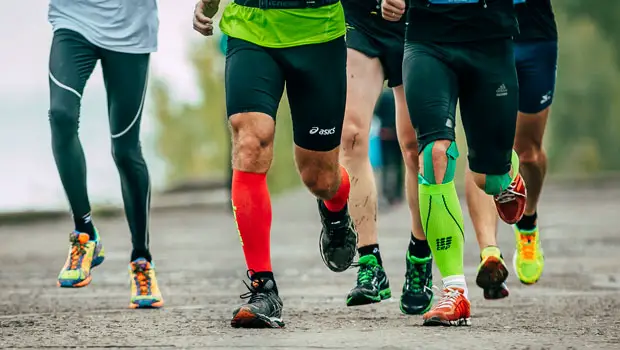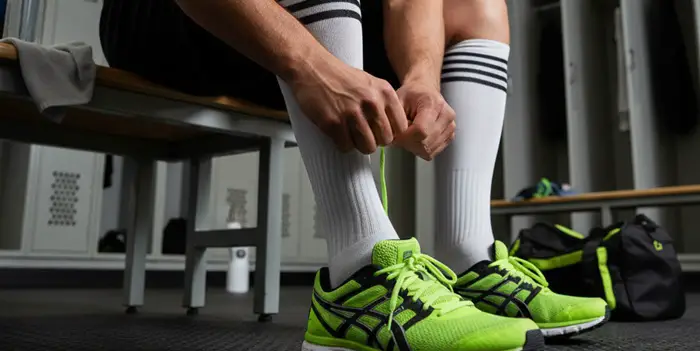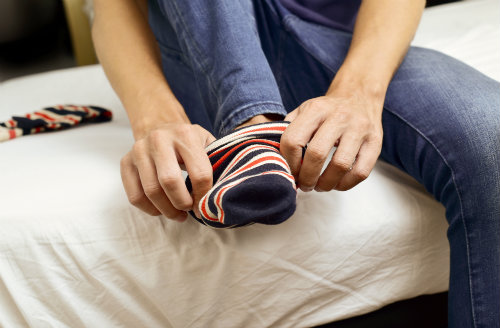
If you’ve ever peeled off your socks at night and felt that strange mix of relief, freedom, and “wow, my skin needs to breathe,” you’ve probably wondered whether wearing socks all day is actually okay.
Some people love the cushioned, cozy feel; others rip them off the second they get into bed because their feet hurt when wearing socks for too long.
So… is wearing socks too much actually bad for your foot and ankle health? The short answer: it depends on the material, the fit, your habits, and your foot anatomy.
Let’s break it down thoughtfully, technically — and yes, with a dash of playful honesty.
5 Dangers of Always Wearing Socks
Wearing socks isn’t inherently dangerous. In fact, socks are essential for moisture management, insulation, and preventing friction.
But “always wearing” them — especially the wrong pair — can introduce a few problems. Here are the five real risks of always wearing socks, and what to do instead.
1. Trapping Moisture (Skin Breakdown, Odor & Fungal Issues)
Your feet contain 125,000 sweat glands — the highest concentration anywhere on your body.
When your athletic socks trap moisture and heat, bacteria and fungi multiply faster than you can say “athlete’s foot.”
High-risk scenarios
- Wearing socks in summer heat
- Wearing thick wool socks indoors
- Sleeping in socks without breathable fibers
- Wearing synthetic materials that don’t wick (acrylic, nylon blends)
Why is it a problem
Moisture + warmth + friction =
- peeling skin
- softening (maceration)
- blisters
- fungal infection
- intense odor
Natural fibers—cotton, bamboo, merino wool—perform better but still need breathing room.
And yes, is wearing wet socks bad? Absolutely. Wet socks can chill your skin in winter or over-hydrate it in summer, creating a perfect storm for irritation and infection.
2. Reduced Circulation from Tight Elastic Bands or Wrong Fit
Too-tight socks can do more than leave a red indentation—they can actually reduce microcirculation.
This is especially important for people with diabetes, neuropathy, vascular disease, or autism (who may have sensory sensitivities and keep socks on for comfort, sometimes choosing tight ones without realizing).
Materials & Season Factors
- Elastic-heavy synthetic socks in summer swell against warm, expanded skin.
- Thick winter compression-style socks can constrict the ankle when layered under boots.
- Old socks with overstretched bands tend to roll and bunch, creating pressure points.
If you ever wondered if socks can cut off circulation, the answer is yes — not usually dangerously, but enough to cause numbness, tingling, or aching after hours of wear.
3. Heat Build-Up → Swelling, Rashes & “Sock Fatigue”
Heat buildup when wearing your socks too much changes how your soft tissues behave:
- Your skin barrier weakens.
- Your sweat glands overcompensate.
- Your superficial veins expand.
- Your foot volume increases, causing friction inside your shoes.
This leads to swelling, redness, and in some cases the classic complaint: why are socks so uncomfortable?
Seasonal Examples
- Summer: synthetic socks feel suffocating, cause heat rashes, swelling, and “sticky foot.”
- Winter: overly warm wool socks worn indoors dry out the feet and make them itchy.
4. Dermatological Stress: Dryness, Cracks & Contact Reactions
Always wearing socks, especially indoors, leads to occlusion, which disrupts the skin’s natural temperature and moisture regulation. Over time your feet may become:
- too moist in summer
- too dry in winter
- prone to itching
- sensitive to dyes or adhesives (especially in cheap socks)
Cheap chemically treated textiles sometimes cause mild dermatitis — the “wearing toxic socks all day” problem. While not truly toxic, poor-quality dyes or latex threads can irritate sensitive feet.
When feet remain covered 24/7, the skin doesn’t get enough exposure to air, altering keratinization. This results in dry feet, cracked heels, and a feeling of stickiness or tightness.
5. Structural Changes from Continuous Compression & Friction
Always wearing socks (especially tight, thick, or badly fitted ones) can gradually change how your foot moves:
- Toes that are constantly squeezed start drifting inward.
- The sock seam may create repetitive pressure on the nail edge.
- Your ankle muscles lose the natural feedback from barefoot surfaces.
Constant compression and slippery synthetic fibers alter gait mechanics, contributing to arch fatigue, ankle stiffness, and forefoot soreness.
People often report socks hurting toes after long hours, especially in narrow shoes or with non-stretch materials.
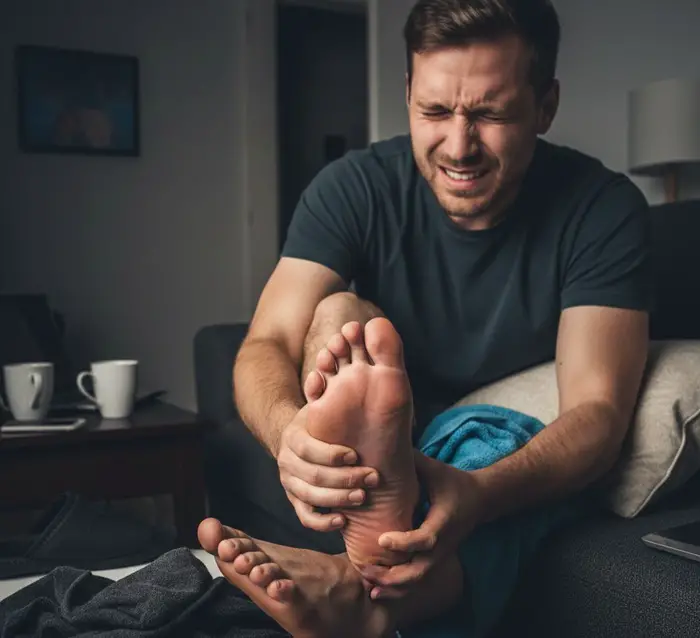
Can Wearing Socks Too Much Cause Foot or Ankle Pain?
Yes — but not for the reasons most people think.
Wearing socks all the time isn’t inherently harmful. The pain comes from the combination of fit, friction, material, and context, such as:
- High-friction seams → toe pain, nail irritation
- Synthetic fibers → overheating → swelling → ache
- Tight compression-style socks → ankle tenderness
- Thick socks in tight shoes → pressure on bones and nerves
- Flat socks with no padding → heel pain, especially on hard floors
When your feet hurt when wearing socks, the cause is nearly always:
- poor fit
- poor ventilation
- poor moisture control
- seasonal mismatch
Long-term, friction can irritate small joints, leading to subtle toe misalignment, mild bunion discomfort, or toenail bruising.
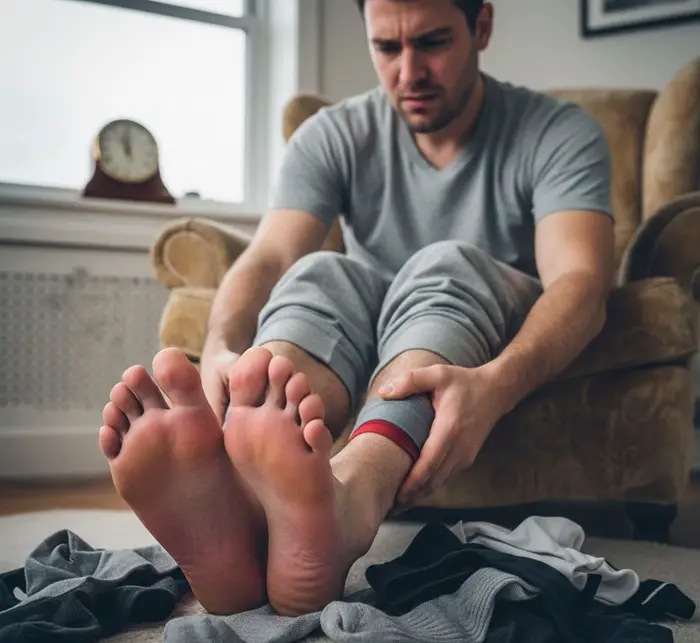
Will Wearing Compression Socks All the Time Hurt My Toes or Cause Bunions?
Compression socks are amazing tools — when used correctly. They improve venous return, reduce swelling, and help with circulation issues.
But wearing them all the time?
Not ideal.
Here’s what can happen with overuse:
Toe Compression – If they’re too tight or too long, compression socks hurt my toes — this is a common complaint. The constant squeeze reduces toe splay, which increases pressure on joints.
Forefoot Narrowing – If the toe box of the sock doesn’t allow spread, the long-term compression can contribute to discomfort around the bunion area.
Bunion Worsening – They don’t cause bunions, but they may irritate an existing bony prominence.
Nail Issues – The nail edges may embed slightly due to pressure.
Circulation Problems – Mild, but possible: compression socks worn while sleeping or in bed can reduce arterial perfusion for certain individuals.
Compression socks should therefore:
- worn during activity or travel
- removed during sleep (unless medically prescribed)
- replaced every 3–6 months
- properly sized for your calf and ankle
Remember that people with diabetes, vascular conditions, eczema, sensory sensitivities (including autism), hyperhidrosis, and bunions tend to experience irritation sooner than others.
When wearing socks all day, common side effects may include odor, moisture buildup, irritation, itching, mild circulation reduction, and heat rashes.
Choosing breathable materials and rotating between cotton, merino, and moisture-wicking blends helps prevent these issues.
Along with smart material choices, maintain simple hygienic habits—change your socks often, wash them after every wear, and allow your feet to air out for at least 10–20 minutes before putting on a fresh pair.
Clean, dry skin plus clean socks is the most reliable way to avoid odor, irritation, and moisture-related problems.
FAQs:
Is it okay to sleep with socks on?
It’s fine occasionally, especially in winter, for warmth. But don’t make it a 24/7 habit—nighttime is when your skin barrier resets. Constant occlusion increases the chances of odor, moisture buildup, and skin softening.
Can socks cause toe pain or numbness?
Yes, if they’re too tight, synthetic, or poorly fitted. Seams, compression, and elastic bands can contribute to localized nerve compression.
Does wearing socks constantly weaken my feet or ankles?
Not exactly. But being barefoot helps strengthen intrinsic muscles and improves proprioception. Constant sock use (especially thick ones) slightly reduces sensory feedback and may lead to ankle stiffness over time.
Final Thoughts
Wearing socks all day isn’t “bad” — it’s how you wear them, what materials you use, and whether your feet get time to breathe. Your foot and ankle thrive on the right balance of support, ventilation, and freedom.
If you choose breathable fibers, avoid too-tight compression, keep your feet dry, and allow a little barefoot time daily, you can enjoy the comfort of socks without the hidden pitfalls.
Moderation and material choice matter. Treat your feet kindly — they carry you everywhere.

